#buddhist deities
Text

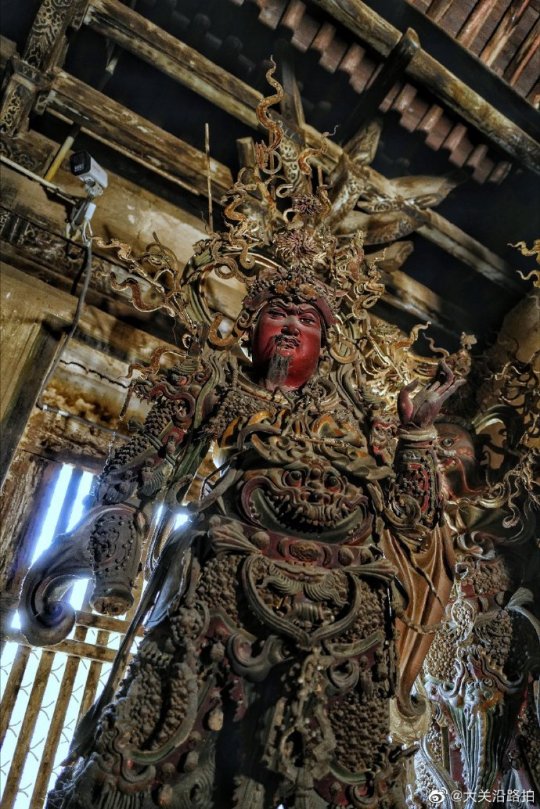
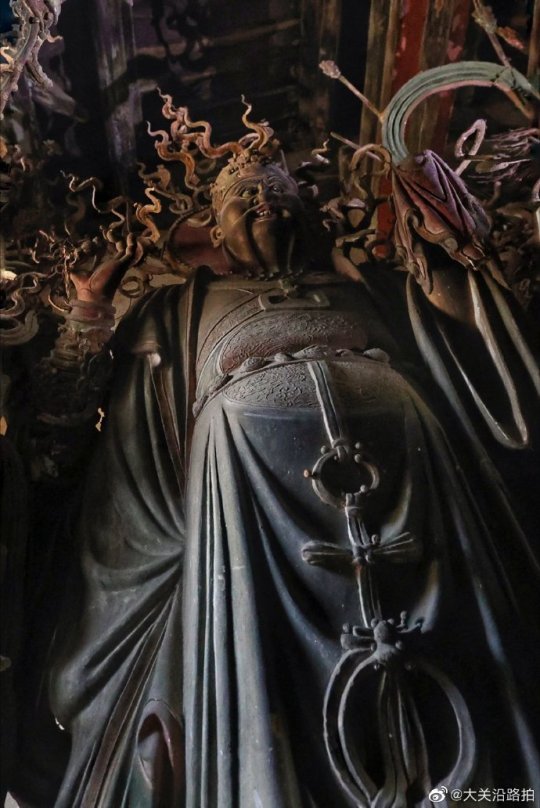

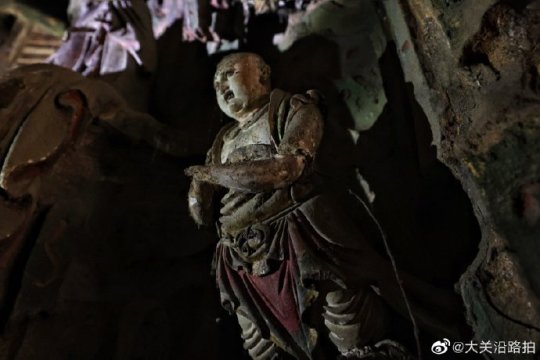




Extreme Baroque: Iron Temple On The Rice Mountain
Grotesque images from the Buddhist Iron Temple (鐵佛寺).
Located on the Rice Mountain (米山), Mixi (米西村) village, Jincheng, Shanxi, the temple is of an unknown construction date. The earliest record on the stone pillar in the main hall dates back to the seventh year of the Dading (大定) period of the Yuan or Jin dynasties. There is evidence that the temple was reconstructed in the third year of Wanli (1575). However, in the county annals, it is mentioned no earlier than the Qing dynasty.
These astonishing, presumably Ming statues owe their creation to the proximity of an iron ore. Iron frames made it possible to give the clay figures intricate poses and frilly decor.
Photo: ©大关沿路拍
#ancient china#chinese culture#chinese mythology#chinese art#chinese architecture#yuan dynasty#jin dynasty#chinese temple#statues#sculptures#scultpure#buddhist temple#buddhist#buddhist deities#religious art#buddhism#ming dynasty#qing dynasty#statuary#religious imagery
126 notes
·
View notes
Text
Buddhist Deities Exiled From the Western Heaven
My new article examines the reasons why three Buddhist deities from Ming-Qing vernacular Chinese literature are exiled from the Western Heaven.
Master Golden Cicada (Jinchan zi, 金蟬子) (a.k.a. Tripitaka, Tang Sanzang, 唐三藏) from Journey to the West (Xiyouji, 西遊記, 1592) - a Buddha disciple who is caught sleeping during the Tathagata's sermon.
Miao Jixiang (妙吉祥) from Journey to the South (Nanyouji, 南遊記, c. 1570s-1580s) - A Buddha disciple who kills a belligerent sage on the grounds of the Thunderclap Monastery.
Great Peng, the Golden-Winged King of Illumination (Dapeng jinchi mingwang, 大鵬金翅明王) from The Complete Vernacular Biography of Yue Fei (Shuo Yue quanzhuan, 說岳全傳, 1684) - An avian dharma protector who kills a stellar-spirit for farting during the Tathagata's lecture.
The article analyzes them together and notes parallels, even with concepts from Greek philosophy.
The motif might serve as a good idea for writers wanting to create an OC with an interesting backstory. I have, for example, previously used it to suggest a fictional origin for Sun Wukong as a hot-tempered Bodhisattva (see the 06-16-23 update here).
#Buddhist deities#Chinese fiction#Master Golden Cicada#Golden Cicada Elder#Journey to the West#JTTW#Miao Jixiang#Journey to the South#JTTS#Great Peng#Great Roc#Yue Fei#story idea#story motif
45 notes
·
View notes
Text
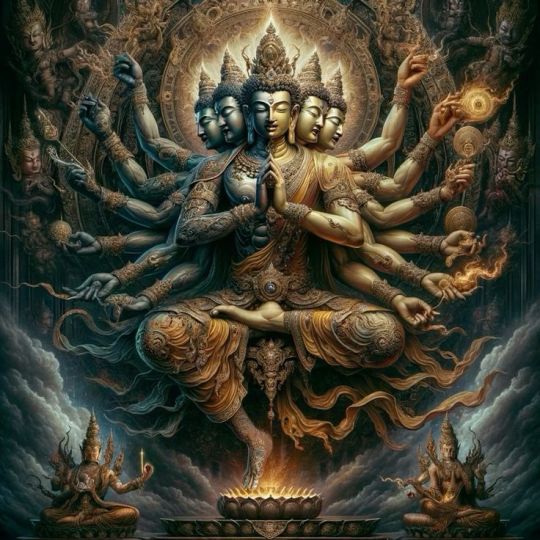
Buddha Vajrapani
Buddha transforming into Vajrapani
9 notes
·
View notes
Photo
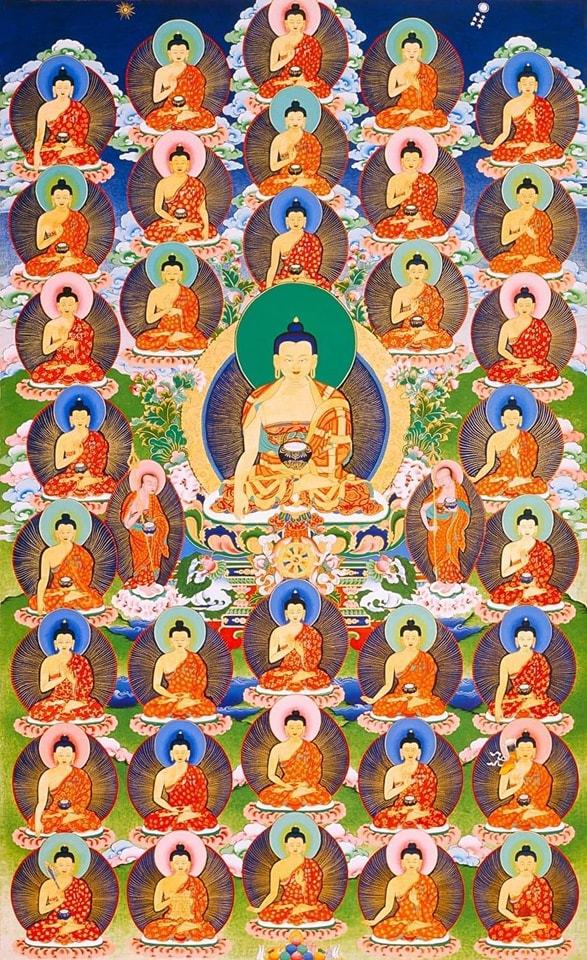
You are not alone because all the time there are numberless Buddhas and Bodhisattvas surrounding you, everywhere loving you, guiding you, that is what they do.
Lama Zopa Rinpoche
[Buddhist Deities, Teachings, and Prayers]
29 notes
·
View notes
Text

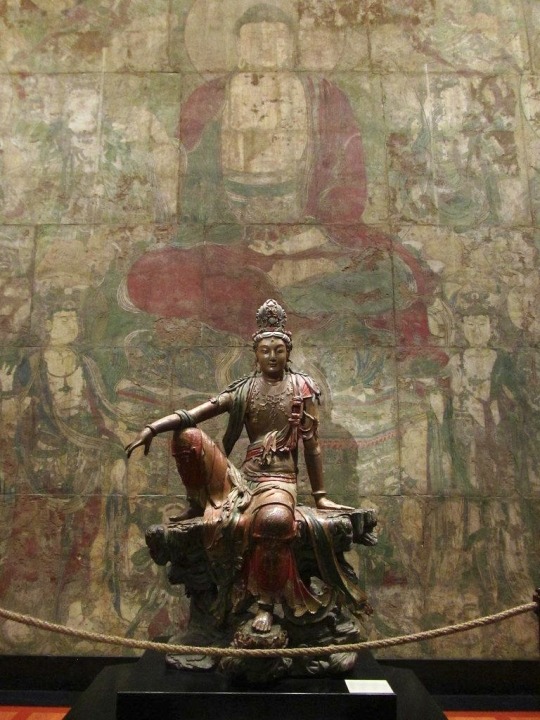
Guanyin of the Southern Sea
A wood statue of the Chinese-Buddhist deity Guanyin. Made during the Liao (916–1125) or Jin (1115–1234) dynasties.
It’s currently located in The Nelson-Atkins Museum of Art, Kansas City, Missouri.
#china#chinese culture#chinese history#east asia#Buddhism#Chinese Buddhism#zen buddhism#guanyin#museum#artifact#wood statues#statues#Buddhist deity#medieval china#ancient china
473 notes
·
View notes
Text

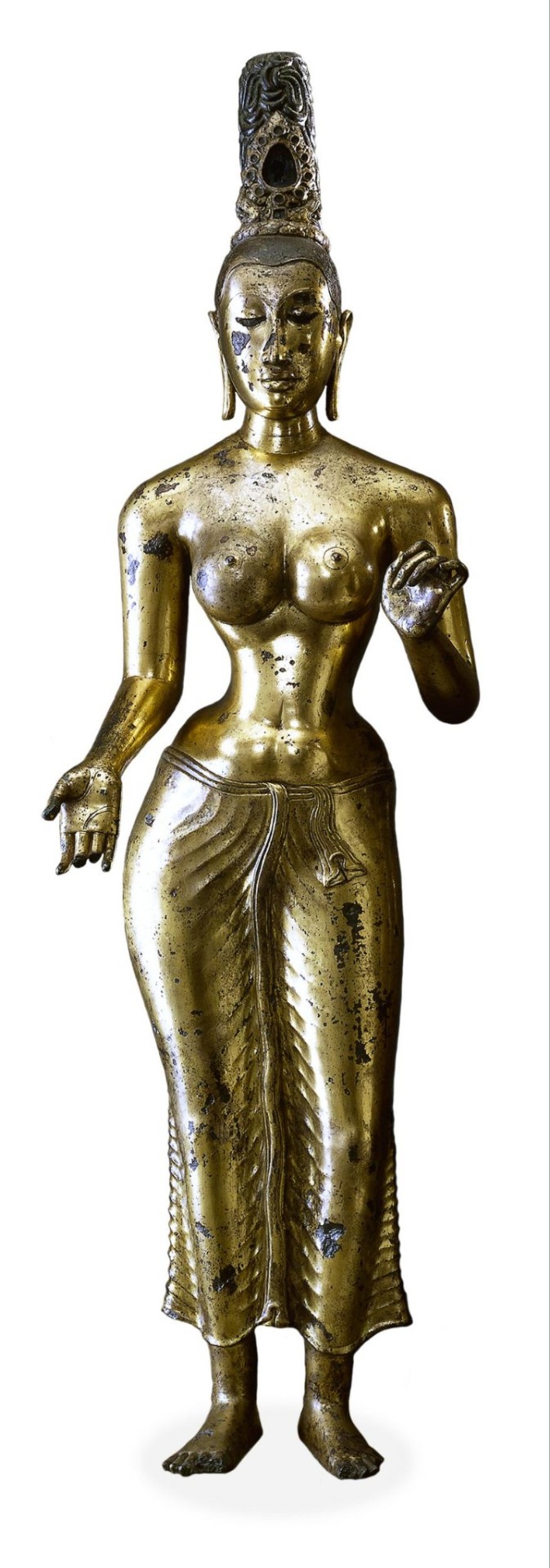
~ Goddess: A standing figure of a female deity (Tārā).
Cultures/Period: Buddhist, Anuradhapura
Date: ca. 8th century
Place of origin: Sri Lanka, Batticaloa
Medium: Bronze, Gold
#history#museum#archeology#archaeology#Sri Lanka#figure#goddess#Tārā#female deity#deity#Anuradhapura#buddhist#buddhism#gold#8th century
552 notes
·
View notes
Text

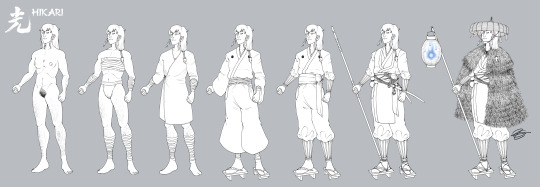
Woe! Transgender samurai be upon ye!
-pulling my old OC out of the filing cabinet and giving him a shampoo- LOOK I HAVE A NEW CHILD!! :D
I've decided to rework an old story/universe from several years ago, so here we go again, from the top:
---------------------------------------------------------------------------
暁の物語 Akatsuki no Monogatari
光 Hikari
Hikari, aka Shitaikou, is a young ronin, a master-less samurai, wandering around Edo-era Japan on a soul-searching journey.
He was raised as a girl named Sayoko (小夜子) by a samurai family, and taught swordsmanship and the arts like his brothers, although he was never destined to become a warrior. When the time came to find him a husband, he stole two swords, ran away and changed his name.
He now walks the roads of Japan on a quest to find [insert as-of-yet undefined quest here], and offers his assistance to villagers on the way. In doing so, he often runs into yokais and other paranormal occurences, to the point where in time he becomes an expert on the occult underworld of Japan and is often nicknamed the Demon Samurai.
Hikari is accompanied in his travels by Chihiro (千尋), a kitsune, and by Mochi (餅), a totally normal cat with the usual amount of tails and absolutely no supernatural powers, no siree. He is also regularly involved with an onnagata (a cross-dressing kabuki actor) and a yokai-hunting Buddhist monk, both of which I have yet to name (Mochi's name is also susceptible of being changed soon), and meets all kinds of strange people on his travels.
Hikari has a kind heart and a strong sense of honour. His driving force is his desire to help others; although he is very naive at first, and misguided altruism often gets him in trouble. As the story progresses, he will grow more mature and cynical, often preferring the company of yokais to that of humans, but trying to retain hope and faith in his fellow men.
(You can see older drawings of Hikari, including different outfits, here)
---------------------------------------------------------------------------
Akatsuki no Monogatari (the Tale of Dawn) takes place in the very beginning of the Edo era, in the transition years between the warring period of the Sengoku-Jidai and the two hundred years of peace under the Tokugawa shogunate. It is a story about change and beginnings, both of a person and of a country.
Some name lore under the cut!
The kanji Hikari 光 means "light". Hikari is a "public first name", sort of an official nickname. It was common practice in feudal Japan (at least among the samurai class) to go by a public name and keep your real name private. In Hikari's case, that is also because he often frequents yokais and magicians, who could use his true name against him.
His real name is Shitaikou 志泰光 . The kanjis composing it mean "aspire", "gentle" and "light". He chose it as a reminder to himself to strive for kindness and to make the world a better place.
("Hikari" is the last kanji composing this name. When used with other kanjis, it is pronouced "kou". Such is the messed-up way kanjis work. -frustrated weeb noises-)
Hikari doesn't have a last name; he gave up his family's name when he ran away and saw no use in taking a new one: as a ronin he is not tied to any family.
His birth name, Sayoko 小夜子 , is composed of the kanjis "small", "night" and "daughter". Hence the title, Akatsuki no Monogatari, the tale of dawn, or how the night turns into the light.
#formerly this universe was called hakatsuki no monogatari because ihad somehow convinced myself that akatsuki starts with an h (???????????)#the as-of-yet undefined quest may be a quest for a gender-transing yokai or deity#i need to do more research into shinto and buddhist deities i'm sure there must be one that fit the bill#or i can just use inari. their gender is unclear and their messenger animal is a fox which is well-known for shapeshifting#anyway i need to draw the rest of the cast and find a name for the onnagata#spoiler she's hikari's gf and they're T4T <3#my ocs#hikari#akatsuki no monogatari#samurai#ronin#japan#edo#transgender#blorbo from my brain
15 notes
·
View notes
Text
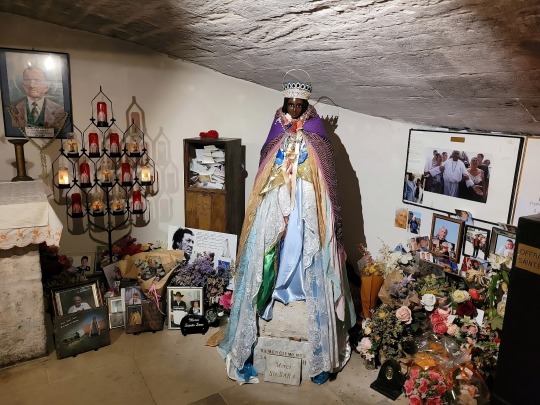

the shrine of saint sarah in the church of the saintes-maries-de-la-mer in in the camargue in france. the church itself was built in the 9th century and named for and dedicated to the three marys. a popular french legend goes that they and their maid, sarah, landed on a camargue coast.
saint sarah, or sarah-e-kali (sarah the black, “the black” is a title sometimes given to black/dark-skinned saints) in romani, is the patron saint of roma people in latin catholicism, though she isn't recognized by the catholic church. she is also revered as a protector for marginalized and poor people in general. her origins are thought to lie in a syncretization of the hindu goddess kali, the story of sarah along with the three marys, and the tradition of black madonnas. (christian roma have historically venerated other black madonnas as well.) the church is her major shrine - she's venerated here annually on the 24th of may by roma pilgrims.
#france#romani#interior#worship#christian#my posts#brahmic (hindu buddhist etc) deities are syncretized into a bunch of very specific forms depending on where you look#and one can have a bunch of different forms that are ultimately the same being/idea#it fits perfectly into the concept of saints if you think about it#not that people think saints are gods but the like. manifestations thing#i think there's some syncretic christianity/west african religions/hindu traditions in places 18th/19th century enslaved indians#were shipped to (mostly in central/south america which has a big history of syncretic christianity in general)
11 notes
·
View notes
Text
Wrathful Deity Vibes
I really like hearing how Kaneko designed the Chaos Hero in Shin Megami Tensei with Dragon Ball Z in mind. Apparently he said in Kaneko Works I that he made Chaos Hero's demon fusion design was had both Piccolo's clothes and Goku's hair and overall vibe.

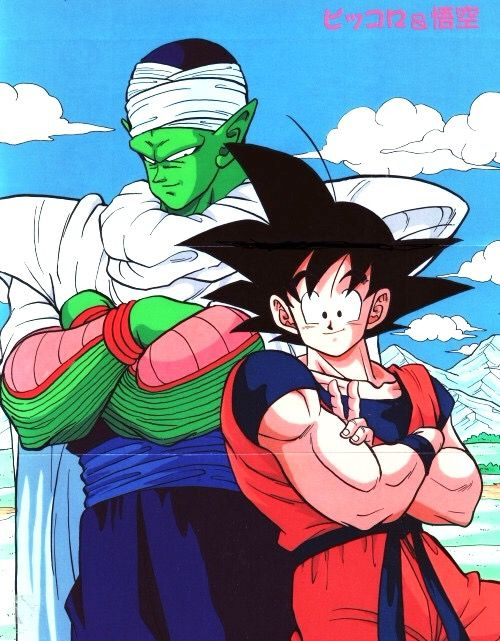
Kaneko also said that the hair was based on the Super Saiyan concept in general, which I find very interesting.
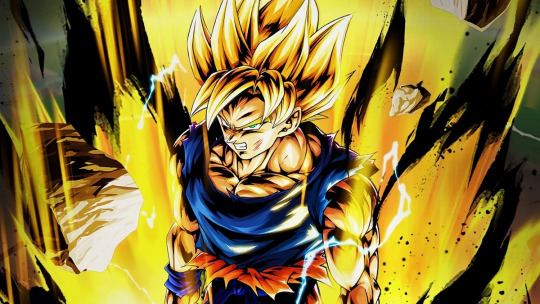
I remember an article that Richmond Lee wrote about Asura's Wrath on Art Eater way back. I can't find it anywhere for some reason, or if I have the link doesn't work anymore, but I really liked reading about the numerous connections between Buddhist art and Japanese popular culture, especially the wrathful deities.
Here's a screencap I could still find from the article below:

Asuras don't always have spiky hair, but there are definitely instances of Asuras with spiky hair in Japanese Buddhist iconography.

Not to mention modern tattoo art.

But I think the image on the left of that screencap is not an Asura, but rather Daigensui Myoo (a.k.a. Atavaka Vidyaraja), a fearsome Buddhist protector deity who was originally a yaksha.

Similar beings are of course frequently found in Buddhist art, where they are emphasized as wrathful and quasi-demonic protectors of the Buddhist teaching and enlightenment. Here's another screen from Richmond Lee's article which I think illustrates the connection to the Super Saiyan image (the image on the left here is a form of the wrathful deity Mahakala):

I always liked this connection, as I have loved the wrathful deity imagery in East Asian Buddhist art ever since I was exposed to the original Shin Megami Tensei. Of course, deities and demons of all alignments in the original game have what we might call Super Saiyan hair, but something about it makes sense in this aesthetic connection for both the Chaos Hero and some of the Chaos-aligned demon gods.


#shin megami tensei#dragon ball z#kazuma kaneko#buddhist art#demons#wrathful deities#hail chaos#anime#akira toriyama#super saiyan
11 notes
·
View notes
Text

GURU RINPOCHE, THE LOTUS BORN
Whatever actions you engage in, do not do anything nondharmic that fails to become the accumulation of merit and wisdom.
Do not desire anything other than omniscient buddhahood and benefiting sentient beings.
Do not be attached to anything. Attachment itself is the root of bondage.
Do not criticize other teachings and do not disparage people. All the teachings are ultimately indivisible, like the taste of salt.
Do not criticize any of the higher or lower vehicles. They are identical in being the path to be journeyed, just like the steps on a staircase.
You cannot know another person unless you can perceive with superknowledge.
So do not criticize others.
In general, all sentient beings are by their very nature spontaneously perfect buddhas. They possess the essence of enlightenment. Do not examine other people's faults or delusions.
Do not examine the limitations of others. Examine how you can change your own.
Do not examine the shortcomings of others but examine your own shortcomings.
The greatest of evils is to hold religious prejudice and to criticize other people without knowing their mind. So give up prejudice as if it were poison.
#buddha#buddhist#buddhism#dharma#sangha#mahayana#zen#milarepa#tibetan buddhism#thich nhat hanh#Padmasambhava#tantra#four noble truths#Avalokiteshvara#amitaba#Shantideva#dalai lama#deities#Dakini#Dzogchen#guru Rinpoche#Dilgo Khyentse Rinpoche
22 notes
·
View notes
Photo

Finally finished this! Writing’s been going great lately, so I figured I’d treat myself to more 80s/90s style fake anime screencaps~
#art#my art#digital art#manga#anime#90s anime#fake#fantasy#lightning#Buddhist#Halastur#wrathful deity#jewelry#villain#Akassol
28 notes
·
View notes
Photo
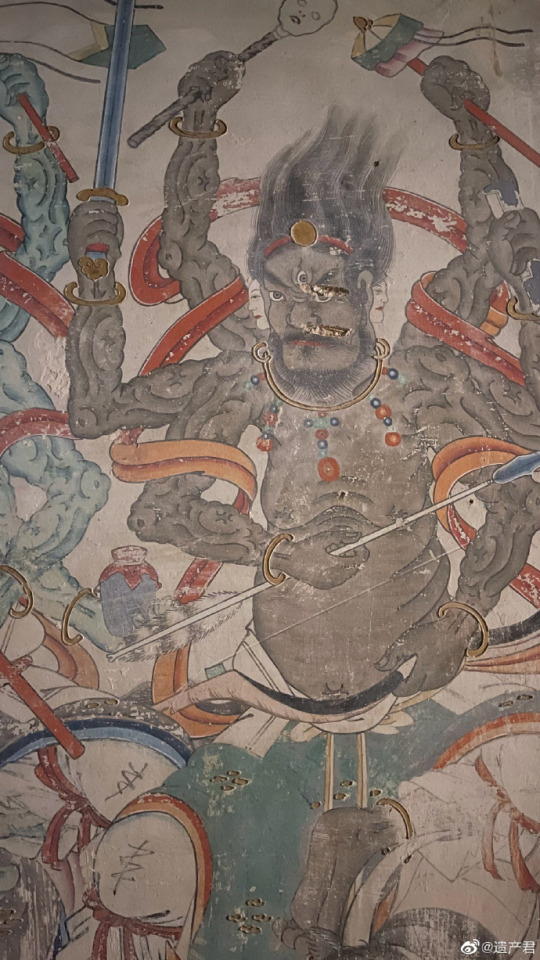


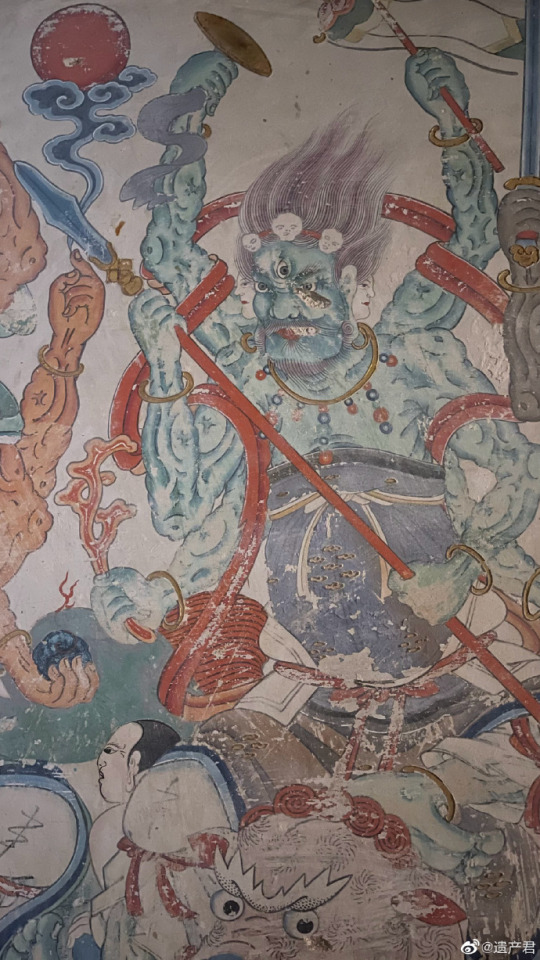
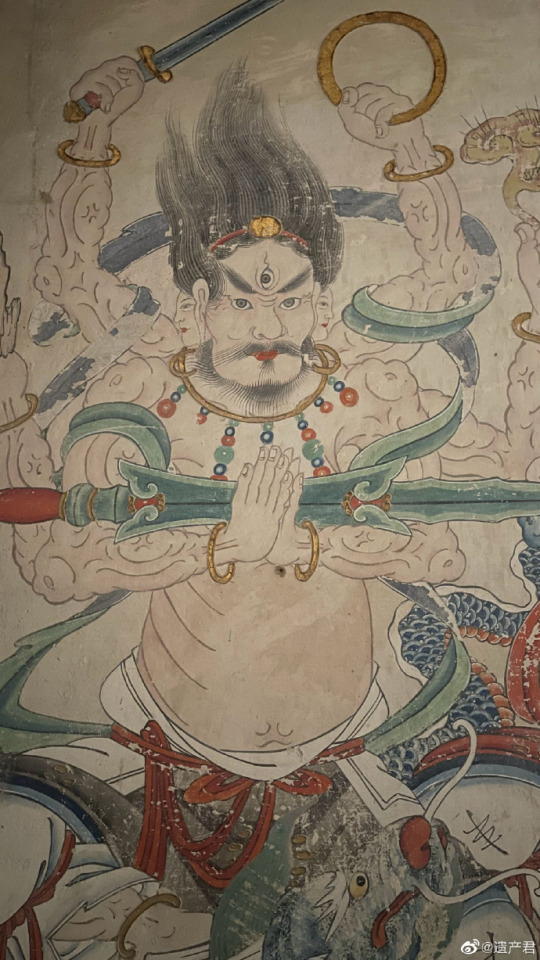
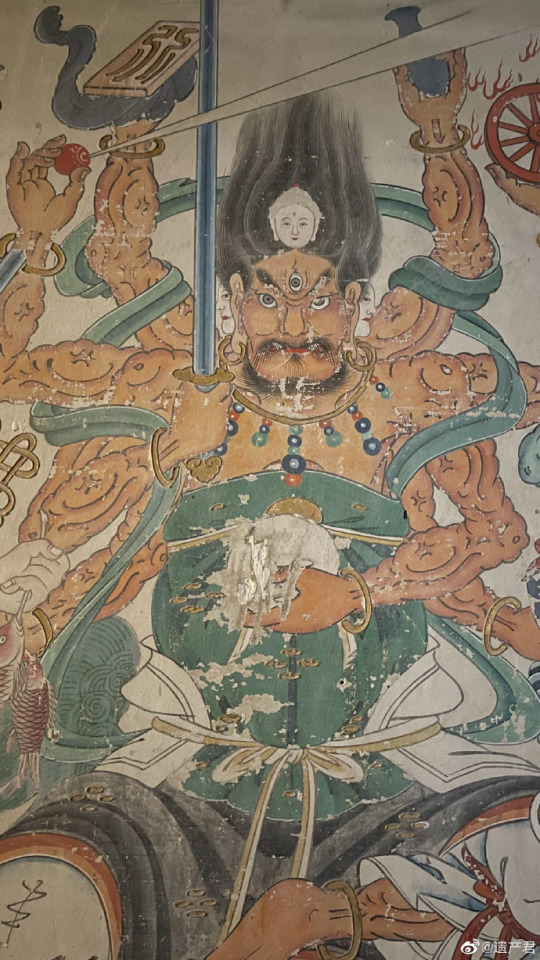
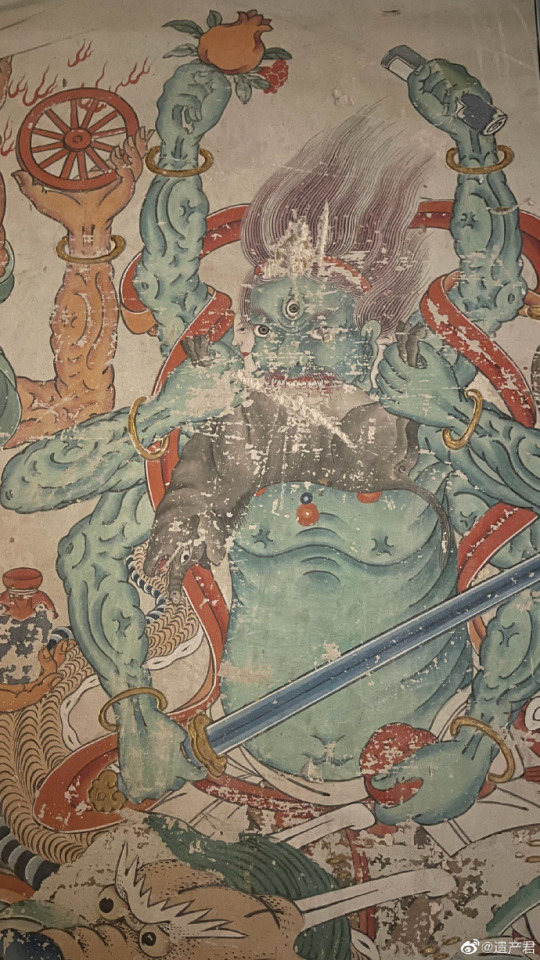


Qing Dynasty murals in Chongtai Temple (重泰寺), Yuxian, Hebei.
Photo: @遗产君
#ancient china#chinese culture#chinese art#chinese architecture#qing dynasty#qing#buddhism#buddhist#chinese folk religion#chinese temple#temple murals#religious art#temple architecture#mural#muralart#wall painting#buddhist deities#chinese mythology#buddhist temple#old china
64 notes
·
View notes
Photo

I gotta deicide how The Unconquered Sun should look like since he had 4 arms and I have no ideas where his second set of arms should be…
#a shame all the 3 heads 6 arms pics of Daoist and Buddhist deities has cloak or shawl on the shoulders…#Even other artist doesn’t want to think too much about it 030#exalted#incarnae#spirit#god#the sun#sketch#art
27 notes
·
View notes
Photo

White Tara
18 notes
·
View notes
Text
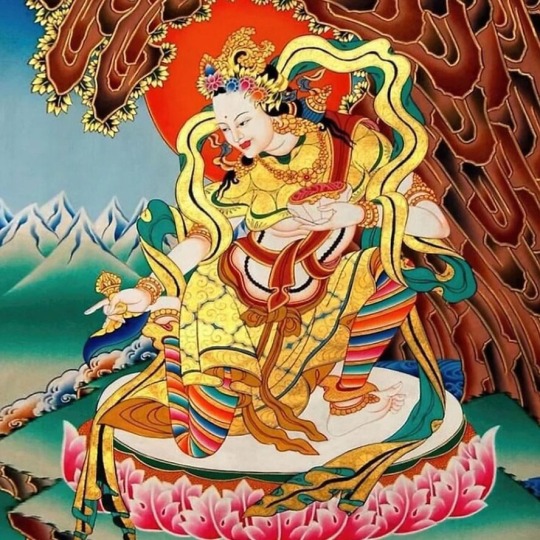
Tomorrow is Dakini Day and the anniversary of the birth of Yeshe Tsogyal. We hope that you are able to honor this special day tomorrow.
Yeshe Tsogyal is known as the “Queen of the Dakinis” and is considered the Mother of Tibetan Buddhism. She was a principal disciple and consort of Guru Rinpoche. The Dakini in Tibetan Buddhism represents the dynamic play of energy, and is also known as the “sky dancer.”
“When Emptiness and Awareness are set free, you are nothing if not a Buddha ... there is nothing but the spontaneity of pure potential. There is no other way to dance in the sky.”
~ Yeshe Tsogyal, from the book “Sky Dancer: The Secret Life and Songs of Lady Yeshe Tsogyal”
[Red Pine (translator) :: Bill Porter (author)]
+
May you be at peace. May your heart remain open. May you awaken to the light of your own true nature. May you be healed. May you be a source of healing for all beings.
Tibetan Buddhist Prayer
#dakini#dakini day#skydance#motherearth#goddess#deity#meditation#embodiment#the Divine#Red Pine#Bill Porter#Buddhist Prayer
40 notes
·
View notes
Photo

#guru rinpoche #padmasambhava #bardo todol #vajrayana #dharma
22 notes
·
View notes